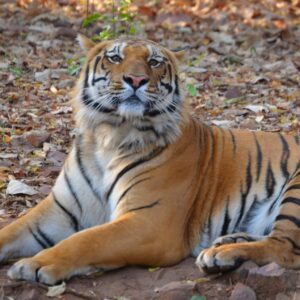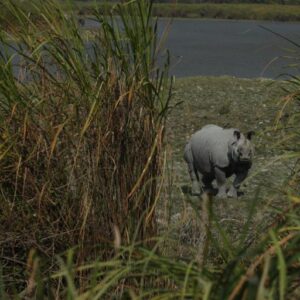Day 01 Arrive Delhi
Arrive Delhi. You will be met by our representative at the arrivals lounge and escorted till your check in at Hotel.
Delhi, the Empress of Indian cities has a fascinating history and a stimulating present. She has often been sacked and left naked and desolate. But she could not be despoiled of the incomparable situation that marks her for the metropolis of a Great Empire. The capital of India, Delhi has been the seat of power of a number of dynasties – the Rajputs, the Afghans, the Turks and the Mughals who continued their imperial line until the British. Scattered over are surviving ruins, remnants of mighty edifices, tombs of warriors and saints, which in an impressive sense of magnificence are memorials not of a single city but of supplanted nations.
Overnight at Hotel.
Day 02 In Delhi
Morning city tour of New Delhi the new capital designed by Sir Edward Lutyens. Drive past the Presidential Palace, the Rashtrapati Bhavan and the secretariat buildings – the centre of all government activity and down the main avenue, the impressive Rajpath to the World War I memorial arch, the India Gate, the High Court Building and the Old Fort. Visit Humayun’s Tomb built in 1565 AD by his grieving widow Haji Begum, the Qutub Minar, 72 metres high and the ruins of Quwat-ul-Eslam (Light of Islam) Mosque. See Delhi’s most curious antique, the uncorroded Iron Pillar, which dates back to the 4th century AD. Visit the Birla (Laxmi Narayan) Temple, with its many idols.
Afternoon visit old Delhi visiting the Red Fort (Closed on Monday) the 300-year-old walled city built by Emperor Shah Jehan in 1648 as his capital and named after him. The magnificent Red Fort built of red sandstone dates from the very peak of the Mughal power, Opposite the fort are the black and white onion dome and minarets of the Jama Masjid, the most elegant mosque in India. Drive past Kotla Firoze Shah, ruins of an old fort of the 14th century with the 13 metre high Ashoka Pillar of 3rd BC. Visit Raj Ghat, where Mahatma Gandhi was cremated in 1948. Drive through the old city subject to traffic restrictions.
Overnight at Hotel.
Day 03 Delhi/Jaipur (Approx. 265 Kms /5 Hrs Drive)
Morning after breakfast drive to Jaipur
Jaipur is where the enduring charisma of the past blends with the throbbing vitality of today. Where a colorful cast of characters – from printers and potters to artists and antique dealers – present a fascinating picture of a city that is alive to both tradition and change.
Raja Jai Singh, the founder of Jaipur was no ordinary man. He was a scholar and an astronomer, keenly sensitive to beauty, a formidable general, who tempered power with wisdom. In building Jaipur, Jai Singh’s vision took him beyond architectural beauty for in the sprawling, barren plains beneath Amber, the former capital, he gave India its first planned city, which has remained unique in two and a half centuries. Jai Singh made Jaipur a haven and it became a center of commerce and religion.
Today, Jaipur has spread far beyond the pink crenulated walls that once defined its boundaries. It presents a fascinating picture of a city where growth, evolution and change are sustained by tradition.
On arrival transfer and check in to hotel.
Evening Rickshaw ride.
Overnight at Hotel.
Day 04 In Jaipur
The day begins with a visit to the Amber fort, the former seat of the Rajput rulers of Jaipur. Ascending the fortress seated on elephants, wander around the beautiful palaces and visit the Shiladevi temple (which continues to be the private temple of the Royal family) with its exquisite marble carvings and silver door.
Afternoon visit the open-air royal observatory Jantar Mantar, with gigantic, astronomical instruments, the City Palace and Museum stopping by the Hawa Mahal or the Palace of Winds.
Overnight at Hotel.
Day 05 Jaipur/Agra ( 250 Kms / 4 – 5 Hrs Drive)
Morning after breakfast drive to Agra en route visiting Fatehpur Sikri.
The abandoned red sandstone city built in the 16th century by the Mughal Emperor Akbar, one of India’s greatest rulers. Remarkably broadminded for his time, this Muslim king married a Rajput princess in order to win over his Hindu subjects. The architecture at Fatehpur Sikri is a combination of Hindu and Muslim styles, expressing Akbar’s vision of synthesizing the cultures..
Continue to Agra.
On arrival transfer and check in to hotel.
Afternoon visit Taj Mahal (Closed on Friday) & Agra fort.
With its incredible lacy white grandeur the Taj Mahal is perhaps the most perfect architectural monument in the world. To the poet Tagore it was a `tear on the face of eternity’. In memory of his wife the great Mughal emperor Shah Jehan constructed this most extravagant and incomparable monument built for love. Amazingly graceful from any angle, it is the close up detail, which is really astounding.
Later visit Agra Fort.
Agra Fort is situated on the banks of the river Yamuna, another monumental mission accomplished by the great Mughal visionary Emperor Akbar. His son Jehangir and grandson Shah Jehan added to this imposing structure during their rule. The palaces, mosques and audience halls contained within its massive wall of red sandstone are perfect examples of blending Islamic and Hindu traditions.
Overnight at Hotel.
Day 06 Agra/Jhansi/Khajuraho (By Train)
Morning in time transfer to railway station to board train Shatabdi Express to Jhansi leaving Agra at 0800 hours and arriving Jhansi at 1040 hours hours.
You will be met by our representative at the railways station & proceed to Khajuraho.
The temples of Khajuraho are India’s unique gift to the world, representing a paean to life, love and joy: perfect in execuation and sublime in expression. Life in every form and mood, has been captured in stone, testifying to the craftsman’s artistry and the extraordinary breath of the vision of Chandela Rajputs. The Khajuraho temples were built in short span of a hundred years from 950 – 1050 AD, in a truly inspired burst of creativity. Of the 85 original temples, 22 still survive constituting one of the world’s greatest wonders
Afternoon city tour visiting the world famous Khajuraho temples built by Chandela kings between 250 AD and 1050 AD. The most important are the Chaunset Yogini Temple dedicated to Godess Kali, the Mahadev Temple, Chitragupta or Bharatji Temple with a lovely image of 11 headed Vishnu, Vishwanath and Nandi Temples, Lakshmana Temple, Visha Temple dedicated to Shiva, which is the largest and most typical of temples.
Overnight at hotel
Day 07 Khajuraho/Bandavgarh ( 260 Kms / 6 Hrs Drive)
Morning after breakfast drive to Bandavgarh.
Bandhavgarh (pronounced Bandogarh) is not very far south of Rewa, famous as the place in which the (albino) white tiger originated. Now it is only found in zoos. Before becoming a National Park in 1968, it was the game preserve of the maharajas of Rewa. Though it involves quite a journey, you may be rewarded with sighting one of the few tigers. There are also interesting cave shrines scattered around the park, with Brahmi inscriptions dating from the 1st century BC. You can visit the archaeological remains of a fort believed to be 2,000 years old where you may spot crag martins and brown rock thrush.
Overnight at hotel
Day 08 In Bandavgarh
Morning and afternoon Jungle safari in the park accompanied by a naturalist.
Bandavgarh park has a wide variety of game. Its main wild beasts are tiger, leopard, sloth bear, gaur, sambar, chital, muntjac, nilgai, chinkara, wild pigs. In 1990, a census revealed that the tiger population had grown from nine in 1969 to 59, sambar from 111 to over 4,500 and spotted deer from 78 to over 7,000. The tigers, whilst elusive, are increasingly seen. The flowering and fruit trees attract woodland birds, which include green pigeon, Jerdon’s leaf bird, crested serpent eagle and variable hawk eagle.
Overnight at hotel.
Day 09 Bandhavgarh/Kanha (210 Kms / 4 ½ Hrs Drive)
Morning after breakfast drive to Kanha.
This is the country about which Kipling wrote so vividly in his Jungle Books. The same abundance of wildlife and variety of species still exists today and the park which forms the core of the Kanha Tiger Reserve (1,945 sq. km) within the game reserve, created in 1974, also protects the rare hard-ground-adapted barasingha (swamp deer). The park has deciduous hardwoods including sal and stands of bamboo, rolling grasslands and meandering stream of the Banjar River. It lies in the Mandla District in the Makai Hills in the eastern part of the Satpura Range. Originally the area was famed as a hunter’s paradise but now the valley has been well developed as a national park
Overnight at hotel.
Day 10 In Kanha
Morning and afternoon Jungle safari in the park accompanied by a naturalist.
Kanha has 22 species and the most easily spotted are three-striped palm squirrel, common langur monkey, jackal, wild pig, cheetah, rasingha and blackbuck. Less commonly seen are tiger, Indian hare, dhole (Indian wild dog), sambar and gaur. Rarely seen are Indian fox, sloth bear, striped hyena, panther (leopard), nilgai (blue bull), Indian porcupine, wolf (outside park proper) and the Indian pangolin (sometimes called the scaly anteater).Kanha has 230 species recorded, more to be found. Good vantage points are in the hills where the mixed bamboo forests harbors many species. Commonly seen species are leaf warblers, minivets, black ibis, common peafowl, racket-tailed drongo, hawk eagle, red-wattled lapwing, various species of flycatcher, woodpecker, pigeon, dove, parakeet, babbler, mynah, Indian roller, white-breasted kingfisher and grey hornbill.
Overnight at hotel.
Day 11 Kanha / Nagpur / Delhi
Morning free..
Afternoon transfer to Nagpur airport to connect flight to Delhi. Upon arrival connect flight for onward destination.





Reviews
There are no reviews yet.